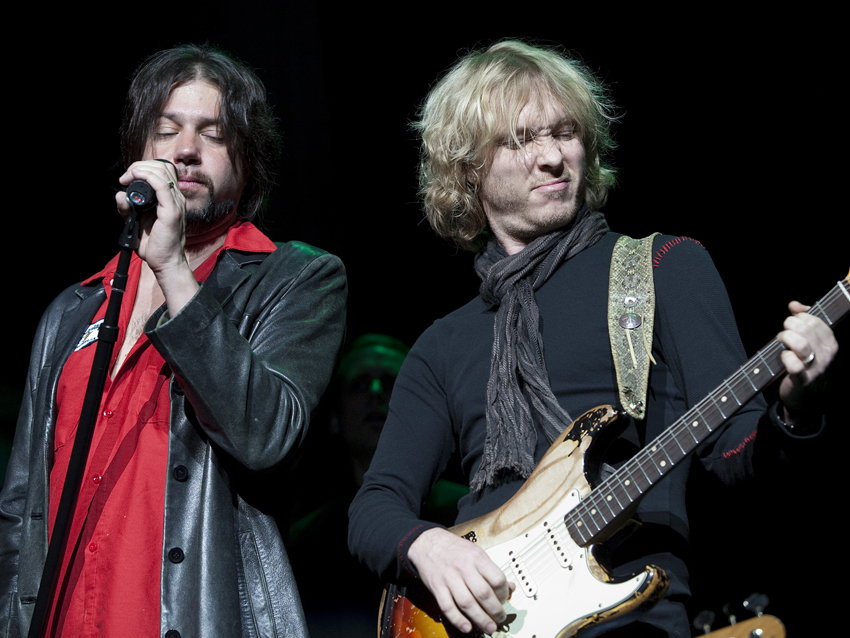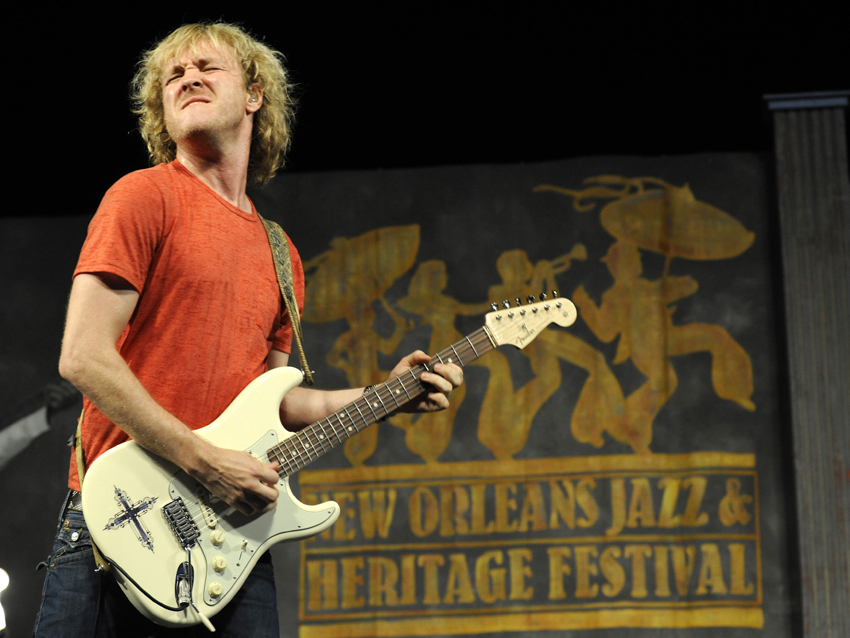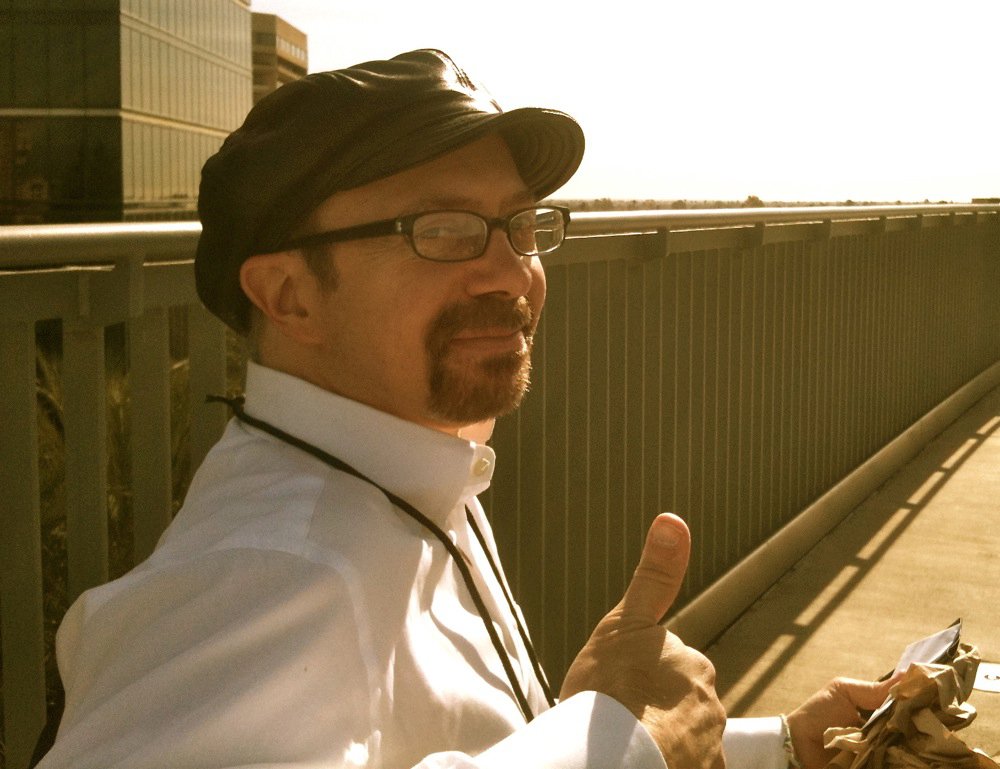
Interview: Kenny Wayne Shepherd on his new record, How I Go

Interview: Kenny Wayne Shepherd on his new record, How I Go

Interview: Kenny Wayne Shepherd on his new record, How I Go

Interview: Kenny Wayne Shepherd on his new record, How I Go

Kenny Wayne Shepherd, pictured with his trusty '61 Strat, releases his new album, How I Go, on 2 August. © Tim Mosenfelder/Corbis
"I used to bang out records kind of back-to-back," says blues marvel Kenny Wayne Shepherd. "Lately, though, I've waited a bit more for inspiration to come to me. Still, it's not like I've been sitting idly by - I've put out records, they just haven't been studio albums."
It's true: Shepherd has released records since 2004's The Place You're In - in 2007 there was 10 Days Out: Blues From The Backroads, a Grammy nominated-CD/DVD that documented the guitarist's musical encounters with blues pioneers; and last year he issued the bracing live disc, Live! in Chicago, which featured performances by Hubert Sumlin and Willie 'Big Eyes' Smith, among others.
Even so, Shepherd's legion of fans have clamored for a brand-new studio offering, and on 2 August their wishes will come true with the release of How I Go, a masterful 13-song set (a 'special edition' version features four additional cuts) which could very well be the Louisiana-born axman and songwriter's strongest effort to date.
Shepherd co-produced How I Go with Jerry Harrison, whom he's worked with previously. "I wrote for maybe a year, year and a half, and then we spent probably a year in the studio, maybe more," says Shepherd. "But it wasn't like we were recording the entire time - I fit in a lot of touring. I just wanted to make sure that everything with this album was really right. I let the music guide me and dictate the pace."
Diversity and taste rule the day on How I Go. From the straight-ahead, butt-kicking rocker Never Lookin' Back (you can order the song from iTunes here) to the this-close-to-metal The Wire to the shimmering pop ballad Who's Gonna Catch You Now?, Shepherd and his band (lead singer Noah Hunt, keyboardist Riley Osbourn, along with the always steady rhythm section of Chris Layton on drums and Tommy Shannon on bass) ace their way through a wide range of genres. Fiery, blues-based guitar playing, of course, remains Shepherd's raison d'etre, and on the new album he simply astonishes.
Kenny Wayne Shepherd sat down with MusicRadar recently to talk about the making of How I Go, the guitars and gear he used on the record (his treasured '61 Strat is the heart and soul of his sound). What's more, he filled us in on what it was like to play the actual guitar that Jimi Hendrix performed with at Woodstock.
Want all the hottest music and gear news, reviews, deals, features and more, direct to your inbox? Sign up here.
The new album has a very punchy sound, not overly produced, but there's definitely a nice sheen to it. How did the band set up in the studio? And did you play any solos live?
"I definitely like the band to play live in the studio. We don't go in and do things one instrument at a time. On The Place You're In, we did that because the producer, Marti Frederiksen, and I played the majority of the instruments on it. On this record, I approached it the way I've always liked tracking: the band set up and played together. Not necessarily the way we would be as if we were playing a show, but definitely altogether in the room, with the exception of whoever's singing, whether it's me or Noah. If I'm singing, we just track it and I sing it later.
"The kind of music I make is meant to be played live by musicians working together, inspiring one another, vibing off of each other. When you don't do that, I think you can hear a disconnect. When you nail the groove of the rhythm section and my rhythm guitar, then you've got something to build on. In a lot of cases, what you hear are the first passes.
"A lot of the solos are overdubs, but there was one I played live. I can't remember which one, but there was a slight problem because we were getting too much bleed-over into the drum mic. But it was a great solo, so we ended up using it. [pauses] I'm drawing a blank on which one it was now!" [laughs]
Above: Listen to Kenny Wayne Shepherd's Never Lookin' Back.
You've worked with Jerry Harrison before. What does he bring to your music?
"Well, I don't think you get to be in one of the biggest bands in the world, the Talking Heads, and become inducted into the Rock And Roll Hall Of Fame, without knowing what you're doing. I do remember, though, when he came onboard to work on my first record, I was thinking, What does this guy know about the blues? [laughs] Turns out, his first band was a blues band!
"Jerry and I have an exceptional working relationship. He hones in on every instrument, every song. He knows how to push me, too. And he's really great when it comes to working with Noah."
Noah is a fantastic lead singer, and the two of you harmonize beautifully together. But your own vocals on Cold and Who's Gonna Catch You Now? are wonderful. Why don't you sing lead more?
"You know, I did that on The Place You're In, and the thing about my singing is…it really depends on the material. My voice is better suited for pop-rock songs, while Noah is a better singer for the real powerful, soulful stuff. He's got those chops. And that's the type of music I really like to play, so Noah's the man to sing it.
"I just don't want to bow to the pressure of having to sing. Without naming any names, I've heard a lot of guitar players who have stepped up to the vocal mic out of pressure and fear that you can't just be a guitar player, and I think their music has suffered because of it."
Strut is a pretty blazing instrumental that has a bit of a Stevie Ray Vaughan Scuttle Buttin' vibe. It probably doesn't hurt to have Double Trouble backing you up, does it?
"No, it doesn't. They're fantastic, of course. At this point, I've been playing with them for quite a while now, so it's almost like second nature. But I still do pinch myself sometimes, 'cause these guys were my heroes - they still are.
"The song is definitely a nod to Stevie. I don't know if it's a nod to Scuttle Buttin' more than it's a tip of the hat to Travis Walk. But sure, it has the Stevie feel in there. One of the things I always loved about Stevie, particularly when he did instrumentals, was how his rhythm playing was almost like lead playing. Why can't a rhythm part be as much a feature as a solo? Stevie was great at that."

Lead singer Noah Hunt (left) and Shepherd, on stage in San Francisco, 2010. © Tim Mosenfelder/Corbis
Talk about your choice of cover tunes. There's Bessie Smith's Blackwater Blues, Albert King's Oh, Pretty Woman and Yer Blues by The Beatles.
"Backwater Blues was Jerry's idea. He wanted to me to do a song by Bessie Smith. Plus, he thought it would be very relevant since I'm from Louisiana and everything the state has gone through since Katrina. We cut it, and it sounded great. To me, every album needs a great shuffle, you know? [laughs]
"Jerry also came up with Oh, Pretty Woman, and I think we did a great job on it. When I do cover tunes, I want them to be by artists that I dig, who have influenced me and I respect what they've done, but I also like to do the less obvious covers. There's a ton of Albert King tunes that I could've covered, but Oh, Pretty Woman felt like a good, not-so-obvious choice.
"Same thing goes with Yer Blues by The Beatles. I've heard that song many times, but about four years ago, I was driving to church one morning, and I was listening to one of those 'Breakfast With The Beatles' shows. They played Yer Blues, and something just hit me. I knew right then that I wanted to cover the song, and I knew how the arrangement should go. I kept that one in my back pocket for years, but I made sure not to forget about it."
The song The Wire isn't really blues; in fact, it's a flat-out hard rock track.
"Yeah, well, you know, I like to rock! [laughs] I kind of feel like I'm in the middle of Hendrix and Stevie Ray. In the beginning, people were slamming me for trying to be an SRV clone or something. But if you listen to my records, there's so many songs that Stevie never would have done. Blue On Black? That's not a Stevie song at all. And I don't think he would've done a song like The Wire, either. There's a lot of different textures on the record, and I thought The Wire really fit."
Your guitar playing on Dark Side Of Love really stands out. You get such a screaming, stinging sound that's a mix of BB King, Hendrix, Clapton all rolled in one. Even so, you manage to sound like yourself.
"Thanks. You know, when I go in to do a solo, I do so with a clean slate. I start playing and try to be as spontaneous as possible. There was one song, Heat Of The Sun, where I found that the solo kind of took on a direction, so I orchestrated it a bit and put the parts together. But 99 percent of what I do as a soloist, both live and in the studio, is me going out there and feeling the vibe of the song.
"Maybe one thing that sounds unique about my playing there is the fact I'm not using a pick. All those guys that don't use picks - Hubert Sumlin, Albert King, Albert Collins - the tone is the thing. I didn't go in trying to emulate those guys; I just did what the song seemed to call for.
"You know, I'm not trying to impress anybody at this point. I'm 34 years old, and I got my first record deal when I was 16. When I was younger, I wanted to show everybody what I could do, so I was burnin' and burnin' and burnin'. More and more, I find it's not how many notes I can play but which notes I play…and how I play them."

Shepherd wails with his signature Strat in New Orleans, 2010. © David Atlas ./Retna Ltd./Corbis
What guitars did you use on the album? You're obviously a Strat guy...
"My '61 Strat is still my main guitar, and I'd say I used it on 75 percent or more of the record. That guitar, man, something about it…it's been with me through thick and thin, and it's made some of the greatest sounds that I've ever heard. It's like Old Faithful - you can always count on it. It never goes out of tune, it's got the tone, and it's gotten me to where I am. I love that guitar.
"I did use a couple of others, though. Funnily enough, Fender made me an exact clone of the '61, and I got it about a week before I went into the studio. I wanted them to make me a replica of that guitar so that I could take it on the road and I could put the original in storage - I don't want to risk losing it. I brought the clone in the studio, and it sounded great.
"I also have a '59 hardtail three-tone sunburst with a maple neck, and I used it on several tracks. Some of the clean tones that you hear, they're from the '59. The hardtail is kind of an underappreciated guitar, but I think it has a bell-like sound that's really cool. Those guitars and my signature Strat were pretty much it as far as electrics go."
Beyond it being your own model, what do you find unique about your signature Strat?
"The pickups. I worked with Fender for over a year trying to get the right voicing on those things. They sound nice and round and fat, not too mid-rangey. I'm very proud of how the guitars came out. They have everything I'd want on a Strat if I bought a stock model and modified it to my specifications. It's cool to be able to just grab one out of the box and know that it's gonna sound great and play well."
What about acoustics?
"For acoustics, I used my L Benito. The guy who was building these guitars isn't making them anymore. He used to one of the head luthiers at Taylor, and he was making these guitars out of Chile. He found this 3,000-year-old wood at the bottom of a lake, it's called Alerce wood. The guitar sounds freakin' incredible."

Looking sharp for his album cover shoot. There's that '61 Strat again!
Effects-wise, what did you use?
"A ton of stuff. I tried to keep track of it all, but it became impossible after a while. Primarily, I'm using an Octavia - I have an original Tycobrahe Octavia and one of the Chicago Iron reissues. I also used my Vox Clyde McCoy wah and one of those Custom Audio Electronics wahs that Dunlop sells.
"I used an Analog Man King Of Tone pedal, an Ibanez TS808 hand-wired Tube Screamer, along with a TS808 original Tube Screamer. Let's see…I used an original Fuzz Face that I have, one of the blue ones. Then I also pulled out one of the reissues from Dunlop just to compare the two, and I thought they were remarkably similar.
"For chorus sounds, I used an Analog Man Bi-Chorus pedal. On one song I used one of those Pigtronix phasers - actually, I mixed that with the chorus pedal and had them set at different speeds. There were also some pedals from Xotic, they're a Japanese company - I tried out a bunch of their pedals here and there."
What amps are on the new record?
"I brought a bunch of stuff, like my original '64 blackface Vibroverb. But what I really liked was one of the new Fender Custom Shop 1957 Tweed Twin reissues - unbelievable! I pulled it right out of the box, and couldn't believe how great it sounded. I also used a Dumble Overdrive Special and another amp that Dumble built for me called a Tweedledee Deluxe. It's a killer amp, really incredible sounding. I brought a couple of other things, but those are the ones that really worked for me."
You've participated in a few Experience Hendrix tours over the years. How has playing the songs of Jimi Hendrix on stage affected your own music?
"I don't know that it had any kind of noticeable impact. The fact is, Jimi Hendrix has been a huge influence on me from day one. He's probably influenced everything I do musically more than anybody. So I think that was already there for me. Being a part of the tours didn't make it more so.
"The interaction with the other players was interesting. Everybody kind of brings his A game to the stage. It's not a competition or anything - nobody walks around with an ego, and everybody gets along really well. But when you're playing with that caliber of musicians night after night, it's just natural to try to do your best. Watching a guy like Steve Vai was pretty cool. He's such a showman. He reminds me of Hendrix in his theatricality."
Last year, both on TV and in concert, you were one of the few guitarists on earth to ever play the same white Strat that Hendrix used at Woodstock. What was that like?
"It was cool, man. [laughs] Just by holding it much less playing it on TV, I felt like I got to fulfill the fantasy of every guitar player. I was the first guy to play that guitar since Hendrix, so it was pretty incredible. They brought the guitar to the TV studio and gave me a few hours to get accustomed to it, so that helped.
"Originally, the guitar was set up the way that Hendrix played it: flipped upside down and strung for a lefty. They actually swapped out the nut so that it could strung right-handed for me. It made a bit of buzzing at first because it wasn't being played the way it had always been played. I had to adjust the saddles a bit to fix that. Even though it was an incredible honor, it was a bit like wearing somebody else's shoes. If the guitar could've talked, it would've said to me, 'Hey man, you're playing me the wrong way. You gotta flip me over!'"
Joe is a freelance journalist who has, over the past few decades, interviewed hundreds of guitarists for Guitar World, Guitar Player, MusicRadar and Classic Rock. He is also a former editor of Guitar World, contributing writer for Guitar Aficionado and VP of A&R for Island Records. He’s an enthusiastic guitarist, but he’s nowhere near the likes of the people he interviews. Surprisingly, his skills are more suited to the drums. If you need a drummer for your Beatles tribute band, look him up.
